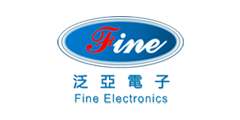What are the Classifications of Commonly Used Inductance Coils?

Inductance coil is a device that uses the principle of electromagnetic induction to work. When a current flows through a wire, a certain electromagnetic field will be generated around the wire, and the wire of this electromagnetic field will induce the wire within the range of this electromagnetic field. The effect on the wire itself that generates the electromagnetic field is called "self-inductance", that is, the changing current generated by the wire itself produces a changing magnetic field, which further affects the current in the wire; the effect on other wires in the electromagnetic field range, Called "mutual inductance".
The electrical characteristics of inductance coils are opposite to capacitors, "passing low frequencies and blocking high frequencies". When high-frequency signals pass through the inductance coil, they will encounter great resistance and it is difficult to pass; while the resistance presented by low-frequency signals passing through it is relatively small, that is, low-frequency signals can pass through it easily. The resistance of the inductor to direct current is almost zero.
Resistance, capacitance and inductance, they all present a certain resistance to the flow of electrical signals in the circuit. This resistance is called "impedance". The impedance presented by the inductor to the current signal uses the self-inductance of the coil. Inductance coil is sometimes referred to as "inductance" or "coil", represented by the letter "L". When winding an inductance coil, the number of turns of the coil is generally called the "number of turns" of the coil.
There are roughly the following categories of inductance coils commonly used in circuits:
Classified according to the form of inductance: fixed inductance, variable inductance.
Classified according to the nature of the magnetic conductor: air core coil, ferrite coil, iron core coil, copper core coil.
Classified according to the nature of work: antenna coil, oscillating coil, choke coil, trap coil, deflection coil.
Classified according to winding structure: single-layer coil, multi-layer coil, honeycomb coil, close-wound coil, inter-winding coil, out-of-body coil, honeycomb coil, random-winding coil.
- +1 Like
- Add to Favorites
Recommend
- The Role of Inductance Coil
- A Brief Introduction to the Principle of Use of Inductance Coils
- Understanding Inductance Coils: Principles, Types and Selection
- The Inductor Coil Manufacturer Briefly Describes the Performance Indicators of the Inductor Coil for You
- Inductor Coil Structure and Characteristics
- Xiangru Electronic Patch CD Unshielded Inductance XRCD43-102K: 1mh Inductance and Size of Only 3.5*4mm
- The World‘s Top Strong Magnetic Field Is Built in China: the Coil Life Is Nearly Doubled, and the Power Supply Is Cheap and Powerful
- Inductance Optimization for Laminated Busbars
This document is provided by Sekorm Platform for VIP exclusive service. The copyright is owned by Sekorm. Without authorization, any medias, websites or individual are not allowed to reprint. When authorizing the reprint, the link of www.sekorm.com must be indicated.






























































































































































































































































































































































































































































































































































































































































































































































































































































































